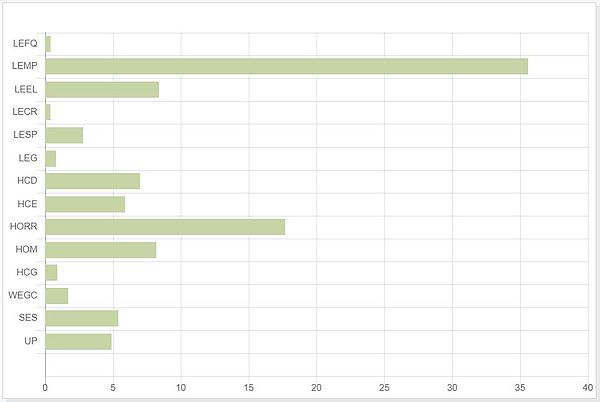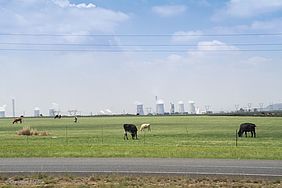The present review contains data on 723 patent applications that were collected as of the date of this publication for the inventions registered in 2018 by 252 applicants from 25 countries in 29 patent offices around the world in the field related to the production of synthetic fuels (synthesis gas and its derivatives, liquid hydrocarbons via Fischer-Tropsch synthesis, direct coal liquefaction, etc.).
About 88% of patent applications were concentrated in the top 10 patent offices listed below. As in the previous year China retains its leadership in terms of the number of registered documents by hosting 27% of the total number of applications, which is 195 documents. About 15% of invention applications were filed in the USA – slightly less percentage-wise than in the previous year and substantially less in terms of quantity. During the time period under revision the share of patent applications registered in EPO and WIPO patent offices and related to synthetic fuels increased noticeably, exceeding 10% for each of the two; however, the total number of registered documents has considerably decreased as well.
Distribution of patent applications, published by the top 10 patent offices
| Patent office | Number of documents, 2018 | Share of total, % |
|---|---|---|
| Canadian Intellectual Property Office | 22 | 3 |
| State Intellectual Property Office, China | 195 | 27 |
| European Patent Office | 84 | 11.6 |
| National Institute of Industrial Property, Brazil | 46 | 6.4 |
| IP Australia | 22 | 3 |
| Industrial Property Office, Japan | 32 | 4.4 |
| Korean Intellectual Property Office | 23 | 3.2 |
| Federal Service for Intellectual Property, Russia | 24 | 3.3 |
| United States Patent and Trademark Office | 107 | 14.8 |
| World Intellectual Property Organization | 78 | 10.8 |
Source: Advanced Energy Technologies
In general, during the present year the trend depicting the number of documents related to the subject of interest has demonstrated a major slump compared to the previous year and particularly to the year before last. At the moment it is still hard to tell for sure whether it is related to a decline in a patenting activity of inventors or to everyday problems, such as delays in publishing new documents registered in 2018 by patent offices, or a reduced efficiency of patent search caused by insufficiently thorough search algorithms. Nevertheless, a simplified evaluation (based on key-words) of the number of patent documents registered in EPO and WIPO also demonstrated a decline starting in 2016. Therefore, one should be cautious speaking about the presence of some kind of trend dependency.
Residents of China and the USA remained the most active applicants in 2018 and their cumulative share exceeded 41%. They are followed by the representatives of France, Great Britain and the Netherlands. This year, residents of South Africa also made it to the top 10 by the number of registered patent applications.
Distribution of countries of the world by the number of resident applicants in patent applications
Source: Advanced Energy Technologies
Whereas in 2017 the majority of applications were filed by non-residents in the patent office of Brazil (132), in 2018 the patent office of China was most popular (78 patent applications from non-residents from 15 countries). Even so, there was a large share of non-residents in the offices of Russia, Canada, Brazil, Australia and Malaysia (83% to 100%). Out of the aforementioned offices, the European patent office was the least popular among non-residents, with a 27% share of non-residents.
As in the previous year the priority areas for inventive activity represented in the form of technology categories were Fischer-Tropsch processes, Gas to Liquid, Coal to Liquid and Biomass to Liquid technologies, as well as the production technologies for Methanol and its derivatives.
The majority of patent solutions in the registered patent applications were aimed at resolving the problems "Low efficiency of main processes" and "High OPEX / Repair and replacement"; however, the share of mentions of the former problem in the documents has declined by more than 5%, while the latter problem was mentioned considerably more often – in 17.7% cases, with almost 6% growth. Beyond that, the interest in the problems related to "High CAPEX / Equipment" and "Low efficiency due to energy losses" has demonstrated a noticeable growth: 2.3% and 1.3%, respectively.
Distribution of technical problems in the patent applications found
Source: Advanced Energy Technologies
AOP - Administrative and organizational problems; HCD - High CAPEX / Development; HCE - High CAPEX / Equipment; HCG - High costs in general; HOM - High OPEX / Maintenance; HORR - High OPEX / Repair and replacement; LECR - Low efficiency due to catalyst replacement; LEEL - Low efficiency due to energy losses; LEFQ - Low efficiency due to feed quality; LEG - Low efficiency in general; LEMP - Low efficiency of main processes; LESP - Low efficiency of secondary processes; SES - Saving ecosystems; UP - Unclear problem; WEGC - Water, energy or gas consumption
Bibliographic data in each tenth patent application contained the two most popular groups of the International Patent Classification – C10J 3/00 (Production of gases containing carbon monoxide and hydrogen, e.g. synthesis gas or town gas, from solid carbonaceous materials by partial oxidation processes involving oxygen or steam) and C01B 3/00 (Hydrogen; Gaseous mixtures containing hydrogen; Separation of hydrogen from mixtures containing it; Purification of hydrogen).
Considerable changes took place in the structure of inventors' interests on the detailed level of technological operations and equipment compared to the previous year. While the share of mentions of technologies related to the production of synthesis gas (Syngas production in general, Primary and other methods and technologies of syngas production) in patent applications remained virtually unchanged, the share of Fischer-Tropsch synthesis and Fischer-Tropsch catalysts has decreased noticeably by more than 3%. In contrast, the interest in microchannel technologies has grown substantially. Thus, in 2018 the cumulative share of Microchannel syngas production and Microchannel Fischer-Tropsch has increased by more than 3.5%; in addition, against a backdrop of the general slump, the total number of patent applications on this technology has increased (although not by much – from 72 to 73). Also, a growth is noticeable in the shares of interest in DME synthesis from syngas (number of applications increased by 8) and in Methanol synthesis and Methanol-to-liquids technologies (share growth by 2.2% with a relatively small quantitative decline).
More detailed information on the methodology as well as on the results of patent researches in the most important fields of contemporary energy industry can be found at Advanced Energy Technologies.
